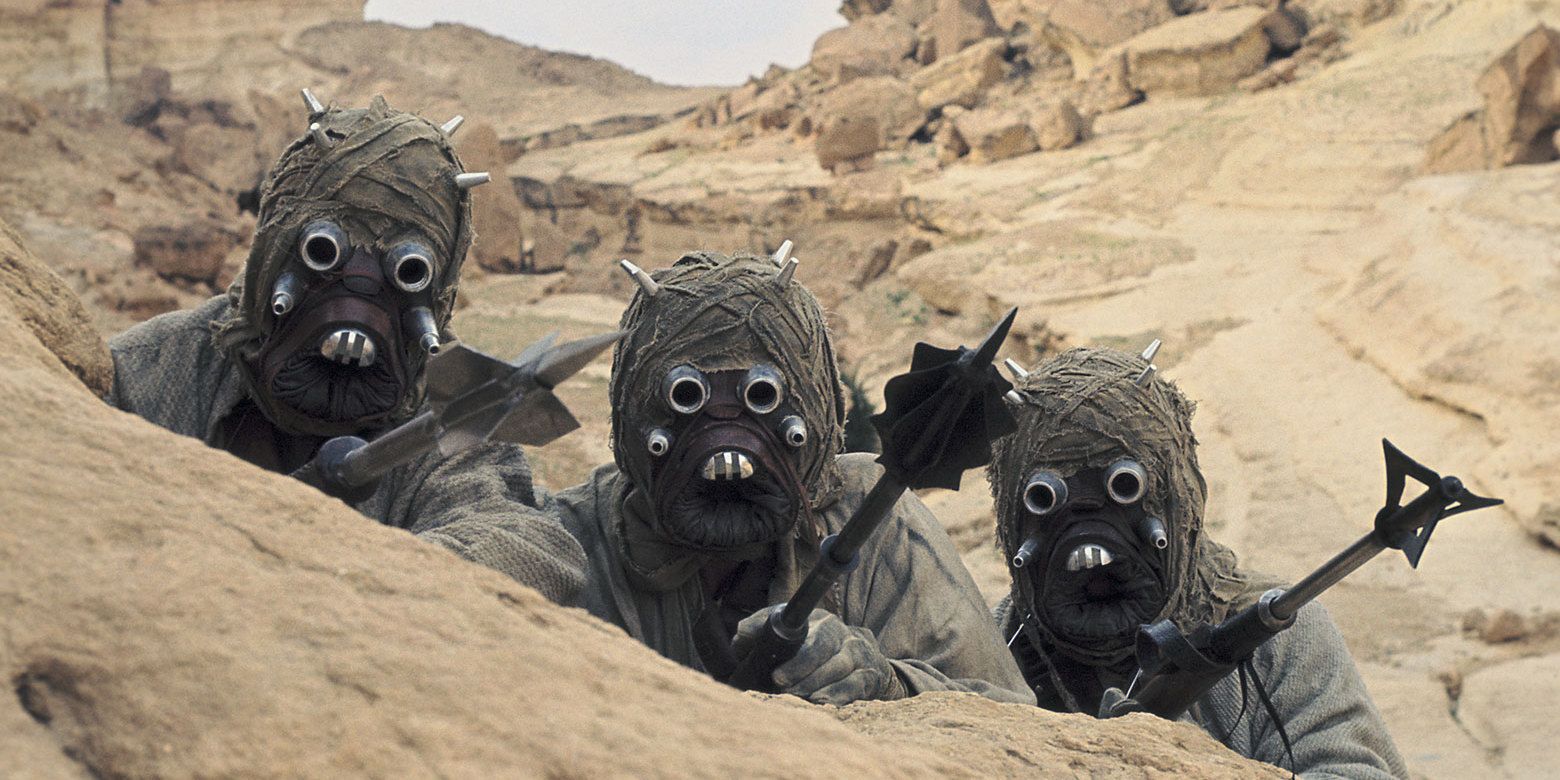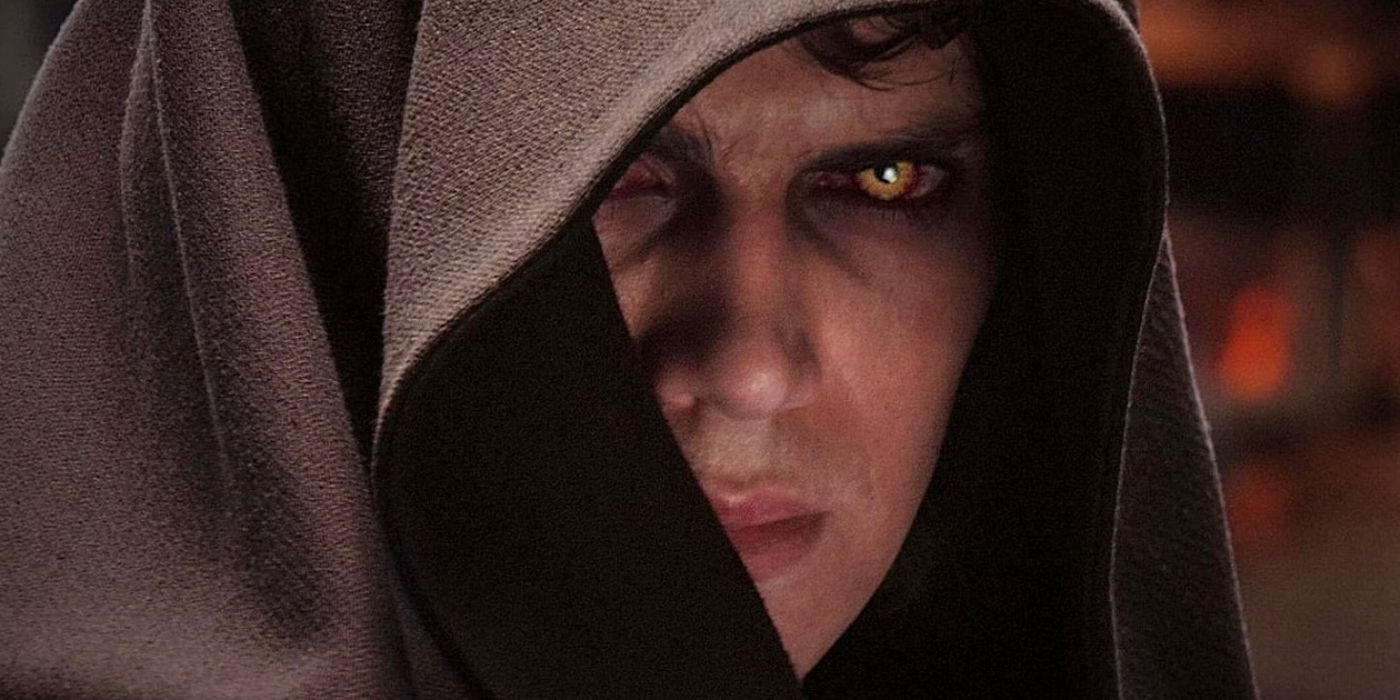Anakin Skywalker is one of the most important characters in all of Star Wars, but this aspect of his story still doesn’t make any sense. Anakin Skywalker’s Star Wars timeline has had a massive impact on Star Wars movies and TV shows. After he was introduced as one of Star Wars’ most powerful Sith in the original trilogy, Star Wars: Episode I – The Phantom Menace revealed that Anakin had once been an innocent young boy on Tatooine, enslaved along with his mother.
Even more shockingly, Anakin was revealed to be the Chosen One, a being prophesied to bring balance to the Force and destroy the Sith. Star Wars: Episode II – Attack of the Clones and Star Wars: Episode III – Revenge of the Sith then chronicled Anakin’s complex fall to the dark side, revealing how he became so corrupted over time. Despite how much has been revealed about Anakin Skywalker’s story, though, one key part of his fall to the dark side remains perplexing.
Anakin Skywalker Slaughtered The Tuskens… But Didn’t Fall To The Dark Side
How Did Anakin Tap Into His Hate Without Turning To The Dark Side?
In Attack of the Clones, Anakin finally heeded the visions he had been experiencing as nightmares about his mother dying and went to Tatooine to make sure she was safe. Unfortunately, he found that his predictions had indeed been correct, as his mother had been taken captive by the Tusken Raiders and hadn’t been recovered, despite rescue efforts. Intent on finding her, Anakin tracked down the Tusken Raiders’ camp and found his mother tied up and clearly suffering from multiple injuries.
When she died in his arms, Anakin tapped into his rage and hatred and massacred every one of the Tusken Raiders in the camp, famously telling Padmé that this included the men, women, and even the children. In truth, this moment wasn’t all that surprising; Anakin’s future as Darth Vader was already known, and there were a number of nods toward the Sith Anakin would become. What was shocking was that, somehow, killing an entire camp of Tusken Raiders—including innocent children—did not turn Anakin Skywalker to the dark side. That turn wouldn’t come until Revenge of the Sith, years later.
Somehow, killing an entire camp of Tusken Raiders—including innocent children—did not turn Anakin Skywalker to the dark side.
The fact that this violence didn’t immediately turn Anakin to the dark side seems to contradict what has been revealed about the nature of the dark side. After all, Master Yoda himself warned Anakin that “fear is the path to the dark side,” as “fear leads to anger, anger leads to hate, and hate leads to suffering.” Yet, in Attack of the Clones, Anakin tapped fully into his anger and hate, and he remained on the light side. This begs the question: why didn’t killing the Tusken Raiders cause Anakin to fall to the dark side right then?
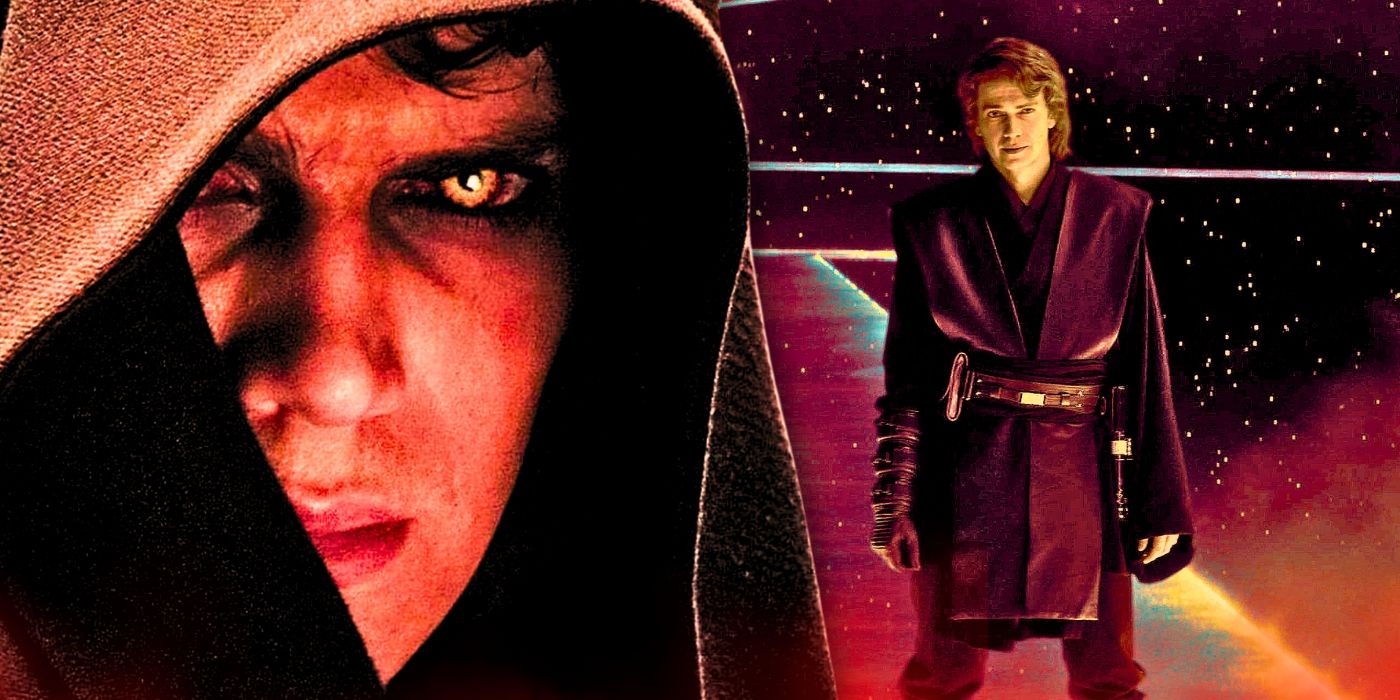
Related
10 Things That Make No Sense About Anakin Skywalker
Although Anakin Skywalker is easily one of the most important characters in all of Star Wars, several parts of his story still make very little sense.
Star Wars Treated The Tuskens As Subhuman
The Franchise’s Representation Of The Tusken Raiders Began As A Problem
I still find it rather odd that Anakin was able to slaughter the Tusken Raiders and remain on the light side of the Force, so much so that he went on to become a Jedi Knight, have a Padawan, and defend the Republic in the Clone Wars. Even so, I can think of a few reasons why Anakin didn’t immediately fall to the dark side after this event, both in-universe and otherwise. For one, in the original and prequel trilogies, Star Wars did not treat the Tusken Raiders like human beings.
It was clear that this was Anakin’s perception of the Tusken Raiders in Attack of the Clones, given he told Padmé that they were “animals.” While this could have been presented as Anakin making an egregious statement, it initially seemed as though Star Wars’ intention for the Tusken Raiders was essentially that: masked evil creatures who were somehow subhuman. This was introduced in A New Hope, when the Tuskens were shown as aggressive and antagonistic, and made all the worse in Attack of the Clones, when they seemed to take and torture Shmi Skywalker for no reason other than evil.
Thankfully, Star Wars has since corrected this unsettling representation of Tusken Raiders, but their original treatment in the franchise could explain why this event didn’t seem significant enough to turn Anakin fully to the dark side. This would be supported by Padmé’s (also concerning) response to Anakin when he confessed he’d carried out the slaughter, which essentially boiled down to telling him it was only human of him to get angry. In addition to being Padmé’s worst moment, this reinforces that Star Wars may have considered this massacre less egregious based on the characterization of Tusken Raiders as pure evil.
Star Wars
may have considered this massacre less egregious based on the characterization of Tusken Raiders as pure evil.
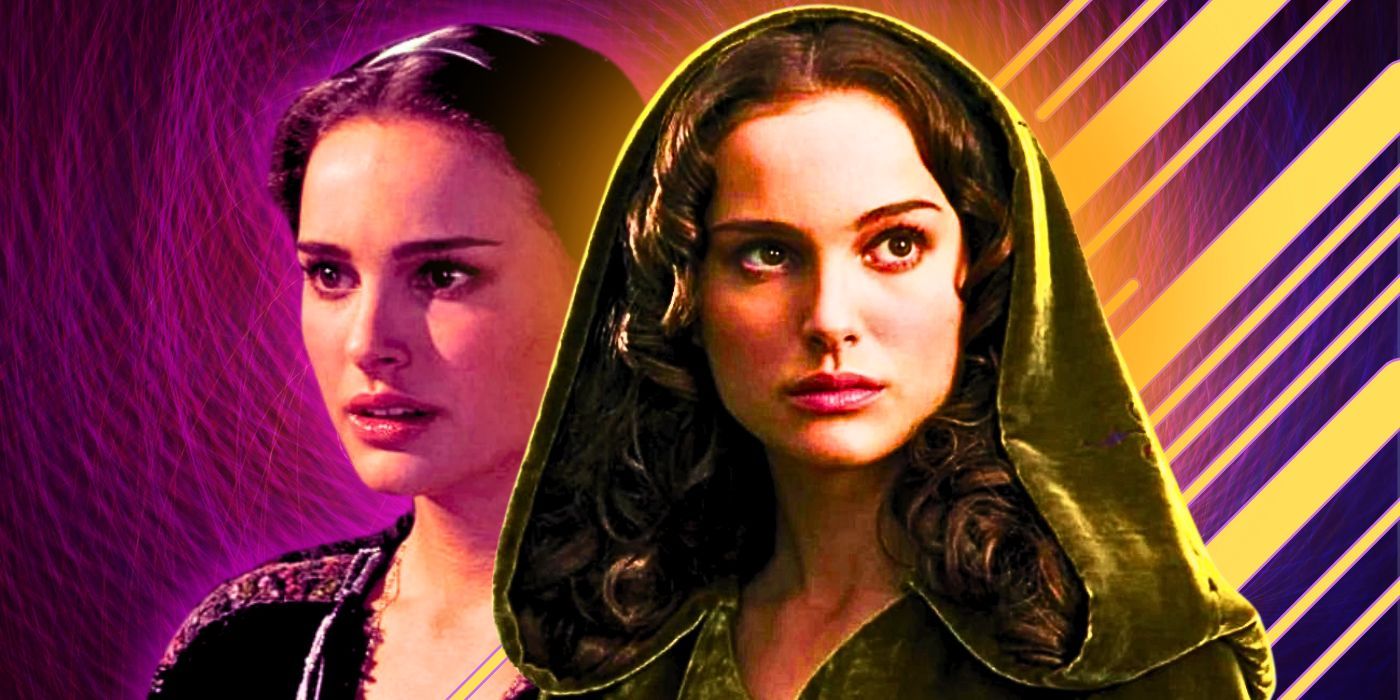
Related
Star Wars Has Left One Major Padme Amidala Mystery Unsolved For 22 Years
One confusing prequel trilogy choice by Padme Amidala has yet to be explained in Star Wars despite the serious implications it has for her character.
Anakin Thought His Actions Were Justified
Anakin’s Belief That He Had Done The Right Thing Oddly Might Have Prevented His Fall
Although this wouldn’t explain why Star Wars didn’t perceive this as a moment Anakin Skywalker could not come back from, it’s clear that Anakin believed he had done the right thing by killing the Tusken Raiders. This is important in so far as turning to the dark side is a choice, which is at least partially true (although it’s a nuanced issue). In light of that, Anakin’s belief that he hadn’t truly done wrong when he slaughtered the Tusken Raiders may have, oddly enough, prevented him from turning to the dark side.
Anakin’s belief that he hadn’t truly done wrong when he slaughtered the Tusken Raiders may have, oddly enough, prevented him from turning to the dark side.
This is in stark contrast to Anakin’s ultimate fall in Revenge of the Sith. In that scene, Anakin makes the split-second decision to defend Palpatine from Mace Windu, who stands in front of Palpatine, ready to deliver a death blow. By cutting off Mace’s arm, however, Anakin opened up a window of opportunity for Palpatine to send Mace Windu flying out the window to his death.
This moment was significantly less violent and fueled by hate, yet it is this event that cements Anakin’s fall to the dark side. The key difference between the two events is how Anakin frames them to himself. Whereas with the Tusken Raiders, Anakin felt justified, saying they were like animals, with Mace Windu, Anakin said, “What have I done?”
Because Anakin felt shame and guilt over helping Palpatine kill a great Jedi master, he believed he was beyond forgiveness from the Jedi. This ultimately made Anakin feel as though he had no other choice, finally completing his journey to the dark side. While odd, Anakin’s (skewed) perception of these two events may explain why he didn’t immediately fall after killing the Tusken Raiders.
Falling To The Dark Side Isn’t Always Instantaneous
Contrary To Some Perceptions, Turning To The Dark Side Is A Process
Another aspect at play regarding Anakin’s ability to massacre the Tusken Raiders and still be on the light side of the Force is the fact that, despite some misconceptions, falling to the dark side doesn’t happen instantaneously. Although Anakin’s fall in Revenge of the Sith has been heavily criticized for happening ‘too fast,’ as was Osha’s in The Acolyte, realistically, it’s often a slow progression, especially when it’s a Jedi becoming a Sith. Falling to the dark side is just as often a trickle as it is a flood.
Falling to the dark side doesn’t happen instantaneously.
While Anakin’s slaughter of the Tusken Raiders in Attack of the Clones did see Anakin using his anger and hate to fuel him, that one event didn’t cement him as a dark side Force-user. That doesn’t mean it had no effect either, though. Rather, it’s proof of what Yoda once told Anakin’s son, Luke Skywalker: “Once you start down the dark path, forever will it dominate your destiny.”
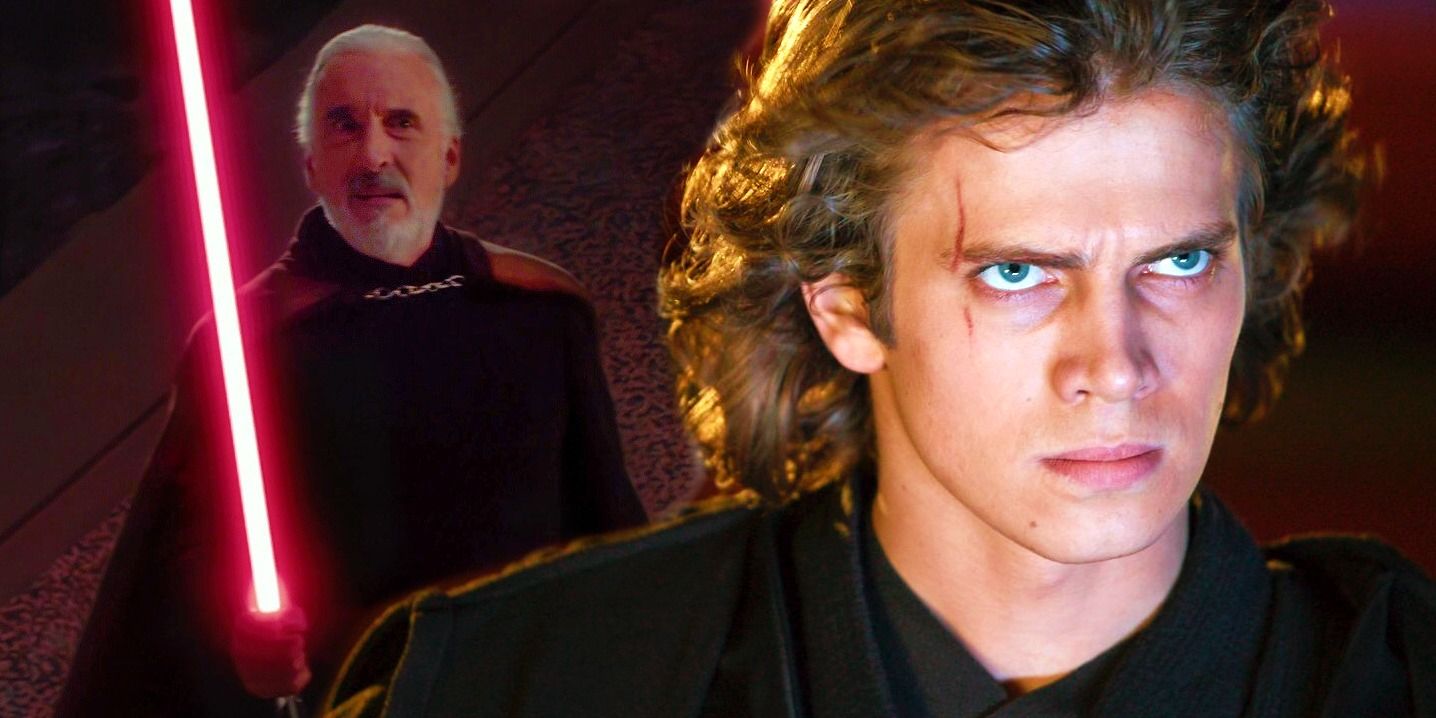
Related
Star Wars: Why Fallen Jedi Make The Most Dangerous Sith Of All
Not every Sith Lord began as a Jedi in Star Wars, but the Sith who were fallen Jedi had a clear advantage over those who only ever knew the dark side.
Killing The Tuskens Began Anakin’s Dark Side Path
Ultimately, This Was The Beginning Of The End
As suggested, while killing the Tusken Raiders might not have independently caused Anakin to fall to the dark side, nor did it mean an immediate turn, this massacre began Anakin’s dark path. Yes, he had shown concerning signs before, such as being stubborn or overtly in love with Padmé, but this moment was when his journey to the dark side truly began. As Yoda predicted, this also ended up determining his fate entirely.
As Yoda predicted, this also ended up determining his fate entirely.
These points do offer a number of explanations for Anakin being able to kill the Tusken Raider men, women, and children without immediately falling to the dark side, although Star Wars still has yet to confirm these possibilities. Because this is such a massive moment in Anakin’s story, I hope Star Wars will soon reveal this mystery. In the meantime, I will assume that Anakin Skywalker was able to resist falling to the dark side after killing the Tusken Raiders for these key reasons.
